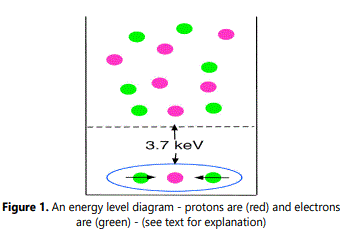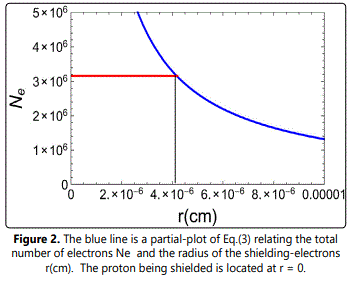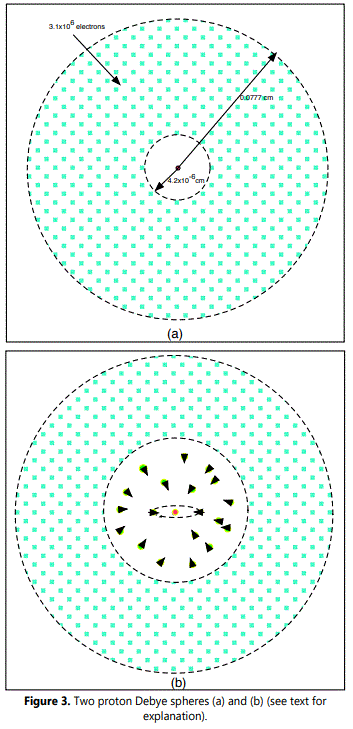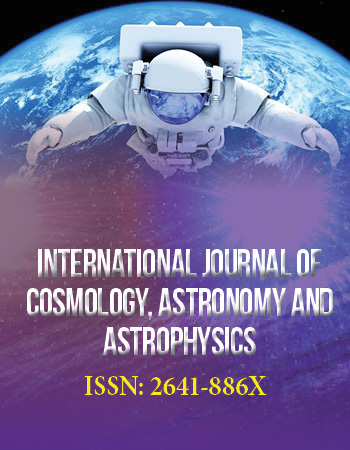Review Article
The Physics of the Tresino Phase-Transition beneath the Solar Surface
Mayer Applied Research Inc., USA
*Corresponding author: Frederick J. Mayer, Mayer Applied Research Inc. 1417 Dicken Drive, Ann Arbor, MI 48103, USA, E-mail: fred@frederickjmayer.net
Received: March 22, 2022 Accepted: April 14, 2022 Published: April 19, 2022
Citation: Mayer FJ. The Physics of the Tresino Phase-Transition beneath the Solar Surface. Int J Cosmol Astron Astrophys. 2022; 4(1): 158-160. doi: 10.18689/ijcaa-1000129
Copyright: © 2022 The Author(s). This work is licensed under a Creative Commons Attribution 4.0 International License, which permits unrestricted use, distribution, and reproduction in any medium, provided the original work is properly cited.
Abstract
An earlier paper located the phase-transition of a recently-discovered composite-particle (which we have called a tresino) beneath the solar surface. It now appears likely that this phase-transition produces solar eruptions, especially coronal mass ejections (CMEs), the power of which has been difficult to explain with conventional physics. This paper details the important role Debye shielding plays in the phrase-transition, which produces a significant release of energy that helps explain the nature of CMEs and other aberrant behavior on or near the surface of the Sun.
Keywords: Tresinos, coronal mass ejections, solar eruptions
History & Background
Thirty years ago, during discussions about energy production in the early universe my late colleague, John R. Reitz, and I uncovered the possibility of a new particle (i.e., a composite particle that has gone overlooked since the early years of the development of atomic and nuclear physics). This oversight would have manifested itself in observations in some physical systems involving energy generation. The formation of this composite particle, which we named the tresino, would result in the release of a significant amount of “binding” energy. Later, we focused on the implications of the energy released from the Earth[1] as well as the implications relating to the energy in the Early Universe[2]. More recently, I published a paper [3] that examined the implications of tresino energy generation in the Sun. This latter paper was the impetus for the present work – it details the basic physics of the solar tresino-formation and explosive energy release.
On Tresino Formation
If the reader has not already encountered our previous work on tresinos, I recommend they look first at Refs. [1], [2], and [3]. Briefly, a tresino forms when two electrons bind to a single proton in a very tight formation – significantly closer to the proton than atomic composites. Unlike atoms, which are bound together by electrical forces, tresinos are bound together over much shorter distances in a balance between electrical and magnetic forces. This is possible when free electrons are forced very close to a free proton[1]. When this happens, two electrons can bind to one proton in a balanced bound-state that releases 3.7 keV of formation (“binding”) energy. This process is briefly discussed in my paper[1] and other references therein.
To begin, it is important to understand where the new energy in the Sun comes from. Figure 1 displays an energy- level diagram that shows why this happens – specifically that the ringed tresino-composite lies well below the plasma background energy by 3.7 keV. So, in those situations where a tresino forms out of the plasma, it will release 3.7 keV to the local plasma. Notice in Figure 1 that the tresino is composed of two spin-opposed (green) electrons bound to one (red) proton. When the tresino forms, it then releases its “binding” energy to the local environment.

The Solar Tresino-Transition Data
The reader should recall the plasma density and temperature at the location of the transition found at 2350 km below the solar surface in [3] because the characteristic plasma values are required for the calculations that follow. These data were found in lines n = 26 through n = 29 of Avrett & Loeserʼs Model C7 of the quiet Sun. I have averaged the electron densities and temperatures for these observations and found the following: < ne >= 1.6 × 109 and < Tev > = 17.5. These values are required in the calculations that follow. Note that this depth was calculated in my paper “The Phase-Transition beneath the Solar Surface” [3] and based upon observational data from Avrett & Loeserʼs Model C7.
Debye Shielding
The key to understanding how the Sun produces tresinos (which are responsible for solar eruptions, CMEs, and other aberrant solar behavior) is the Debye sphere.
Debye shielding is a basic plasma concept discussed in many plasma physics textbooks and others. However, I have found the paper by Martnez-Fuentes and Herrera-Velzquez [4] to be a particularly useful presentation of the basic plasma theory (and accuracy). Therefore using the plasma parameters as found at the tresino-transition from the paragraph above, the Debye length is:

Then the total number of electrons required to shield one proton (that is to say, making-up one proton Debye sphere) is given by:

Notice this is a rather large number of electrons to screen out the field of the centrally-located proton. It is now possible to determine the size of this Debye sphere. Reference [4] shows that the total electron-shielding number vs radius can be represented as:

where δ(0) is the Dirac-delta function representing the proton located at r = 0. Figure 2 is a partial-plot of Eq (3).

This shows how the radius of the shielding-electrons decreases as the total-number of screening-electrons increases to shield the proton at the center. The red-line locates the point where the number of electrons screening the proton obtains the level required at the transitionʼs plasma values. Further, note that at this intersection the radius of the electron-cloud is 4.16 × 10−6cm.
Figure 3 is a schematic-diagram presenting: (a) the Debye sphere as calculated above and (b) the same Debye sphere that is on the verge of “exploding” because it has just acquired its two electrons from the instability of the electron-shell surrounding its proton. Note that Figure 3(b) is not to scale, the diameter of the tresino is about 3 million times smaller than the electron-shell. In this figure many electrons have “flooded” the interior volume close enough to the proton such that two electrons have fallen into the tresinoʼs potential-well, capturing them, producing a bound state, and releasing its 3.7 keV of “binding” energy. As you will see, this release of binding energy is quite significant, and is, I believe, the source of CMEs and other large explosions near the surface of the sun.
Scale of the Phase Transition Explosions
The size of the energy release can be estimated from the proton density and the size of the zone that had been formed. Assuming the numbers of Debye spheres/cm3 are the same as the proton numbers/cm3 the energy released will come from the 1.6 x 109/cm3 of protons, the same as the electron density. So, if each of these spheres ignites releasing its 3.7 keV, the resulting energy release would be 5.9x106 MeV/cm3 - an energy release equivalent to about 141 grams of TNT. This is a remarkably large amount of energy, comparable to nuclear scales. In fact, the energy released in one km3 is equivalent to 141,491 megatonnes of TNT, clearly a gigantic explosion. If these estimates are correct it is likely that explosions at this scale are the source of the coronal mass ejections and other disruptions on the Sun that have been observed but not adequately explained for decades. The standard explanation for corona energy is magnetic field reconnection, but the energy produced from this phenomena would be far too small to account for the size of these explosions.

Parker Solar Probe
The recently launched Parker Solar Probe may be able to examine the plasma-outflow from the corona and hopefully from CMEs. As a result, I am closely monitoring the results of this mission.
Dedication
I dedicate this paper to my mentor, collaborator, and friend Dr. John R. Reitz, without whose efforts this work would not have been possible.
References
- FJ Mayer. Geophysical Implications of Tresino Formation: A Narrated Review. Int J Earth Sci Geol. 2020; 2(1): 86-89. doi: 10.18689/ijeg1000110
- FJ Mayer. Cosmic Implications of Tresino Formation: A Narrated Review. Int J Cosmol Astron Astrophys. 2020; 2(1): 112-114. doi:10.18689/ijcaa-1000
- FJ Mayer. The Phase-Transition beneath the Solar Surface. Int J Cosmol Astron Astrophys. 2021; 3(1): 121-124. doi: 10.18689/ijcaa-1000125
- MA Martnez-Fuentes, JJE Herrera-Velzquez. On the accuracy of the Debye shielding model. 2016; arxiv: 1202.2399. doi: 10.48550/arXiv.1202.2399


